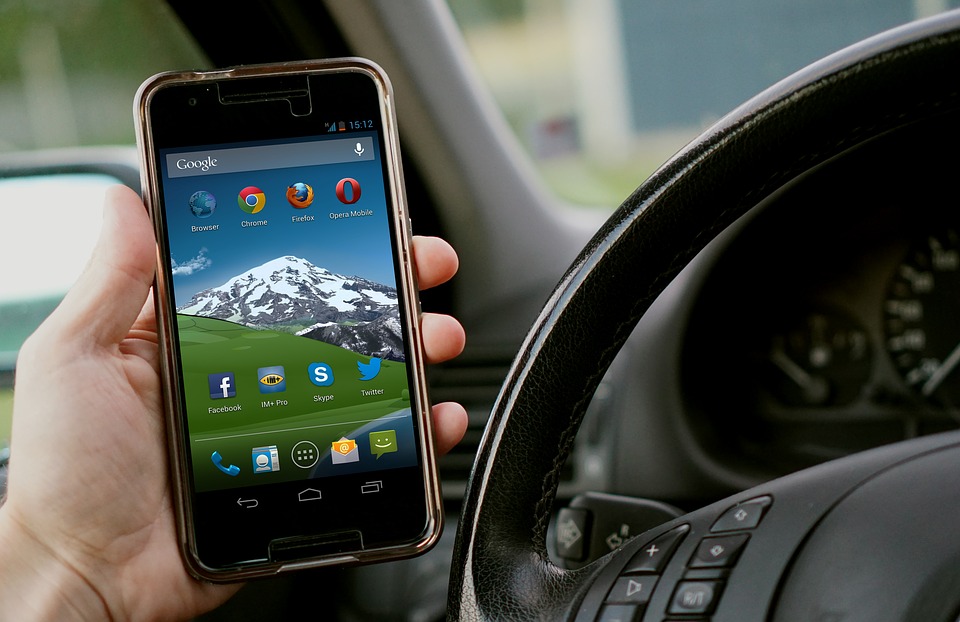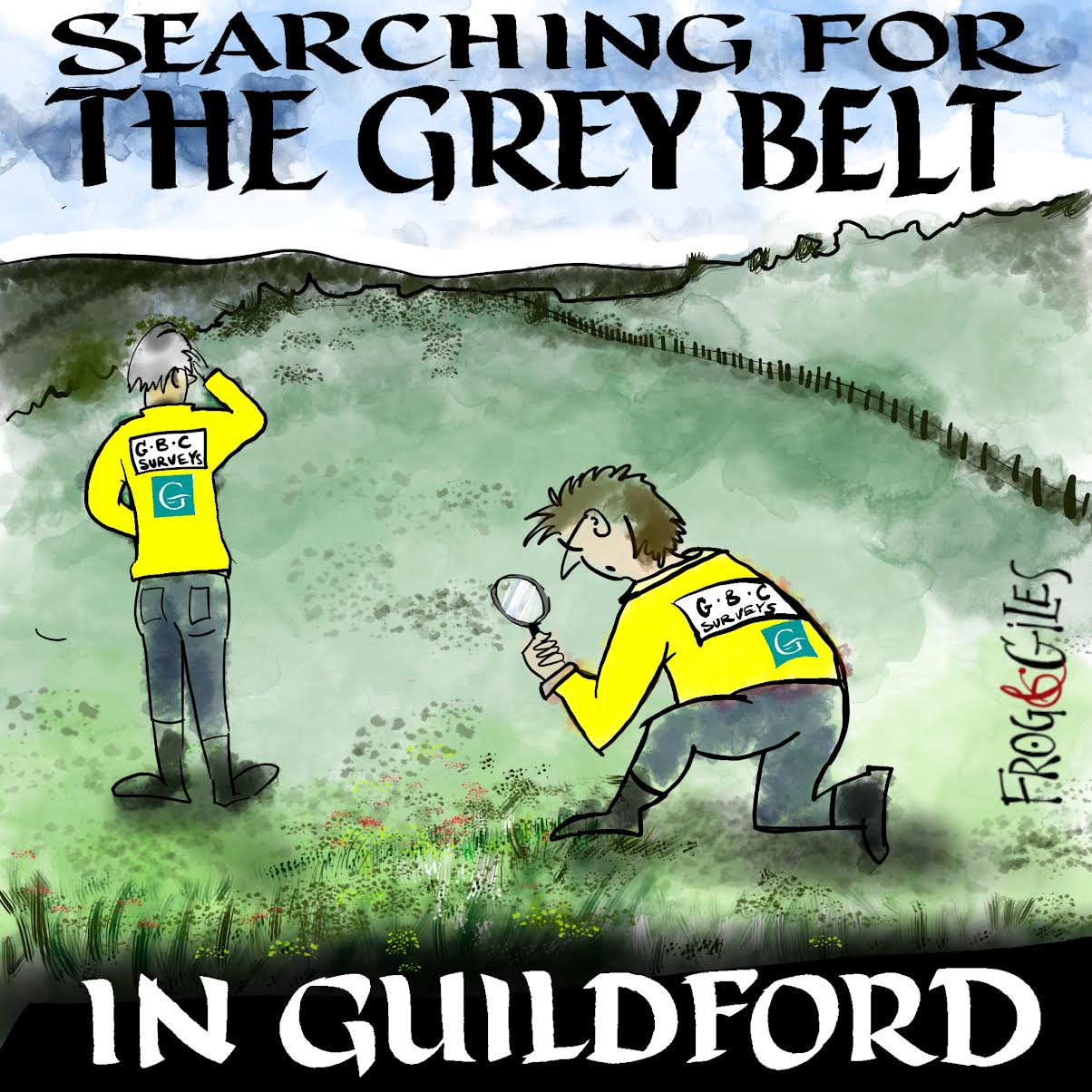 Abraham Lincoln
If given the truth, the people can be depended upon to meet any national crisis...
Abraham Lincoln
If given the truth, the people can be depended upon to meet any national crisis...
 Guildford news...
for Guildford people, brought to you by Guildford reporters - Guildford's own news service
Guildford news...
for Guildford people, brought to you by Guildford reporters - Guildford's own news service
Surrey Police Remind Drivers of Tougher Mobile Phone Penalties
Published on: 1 Mar, 2017
Updated on: 28 Feb, 2017
 Tougher new penalties for using a mobile phone behind the wheel will see motorists face a £200 fine and six penalty points on their licence from today (March 1).
Tougher new penalties for using a mobile phone behind the wheel will see motorists face a £200 fine and six penalty points on their licence from today (March 1).
The increases, which are double the previous penalties of £100 and three points, come into force as a result of a government consultation with the public.
The changes demonstrate how socially unacceptable the Department of Transport want to make the practice and how intolerant motorists themselves are of the practice.
Surrey Police has been running its “It Can Wait” campaign, in advance of the legislative update, to remind drivers that nothing is more important than focussing on driving and whatever your phone is doing, your main concern should be getting to your destination in one piece.
With these variations in penalties, The National Police Chiefs Council (NPCC) is leading a national week of enforcement specifically surrounding this topic. Surrey and Sussex Police are deploying officers for high visibility and covert operations which will target motorists who do not see the risks of what they are doing and who continue to put other road users in danger.
Superintendent Chris Moon, head of Surrey and Sussex Roads Policing Unit (RPU) said: “Using your phone while driving has long been a very dangerous activity and is a reason for many serious crashes. The new penalties reflect this and demonstrate that using a phone while driving won’t be tolerated.
“Although mobile phones are seemingly essential to modern day life that does not mean you have to be on it or able to answer it every minute of the day. Our advice is to put your phone on silent, put it in the glove box or turn it off completely.
“Get into the habit of telling people who may contact you that you will be driving – it is also their responsibility to not call you while you are doing this.
“To coincide with the increased new penalties Surrey and Sussex Roads Policing officers will be out enforcing the tighter regulations and taking a firm stance against anyone caught using a mobile phone when driving.
“These latest legislative amendments are another way to help drive the message home #ItCanWait. Motorists who are evading the law will find out first-hand how the latest change in penalties will hit both their pocket and licence.”
Last year Surrey Police issued 1,502 tickets for mobile phone offences.
The law states that the only time you can use a hand-held mobile phone whilst driving is when calling 999 in an emergency.
Hands-free kits are allowed by law but they can still be an in car distraction. If a police officer thinks you are not in proper control of a vehicle this can also be an offence.
A police spokesperson added: “We are calling on members of the public to back this campaign and help change behaviour to make the illegal use of mobile phones socially unacceptable by the majority.
“You can get involved by sharing social media posts, encouraging family and friends to put their phones down, turn your own off or onto silent when driving and report other drivers using their mobiles to Surrey Police. Nothing is so important that it can’t wait until you reach your destination.”
The campaign runs from Wednesday, March 1 at 00:01 until Tuesday, 7 March at 23:59.
Responses to Surrey Police Remind Drivers of Tougher Mobile Phone Penalties
Leave a Comment Cancel replyPlease see our comments policy. All comments are moderated and may take time to appear. Full names, or at least initial and surname, must be given.

"Found any?" - "Nope, it all looks green to me!" (See Opinion: The Future is Congested, the Future is Grey)




Recent Articles
- Financial Pain Still Only Beginning for Woking
- Sara Sharif Trial Latest – Stepmother’s Silence Doesn’t Prove the Case Against Her, Says Defence
- Updated: Fire at Ash Manor School Tennis Centre Was ‘Accidental’
- Witness Appeal Following Collision on A3 Esher Bypass
- Technical Fault
- Parish Council and CPRE Pleased with MP’s Support for Call In of Solar Farm Decision
- Letter: Memories of Woodbridge Park House and 1950s Guildford
- Letter: The Active Travel Proposal Is the Safest Option for London Road
- Select Committee Votes to Refer London Road Decision Back to SCC Cabinet
- Letter: SCC Chose Not To Verify Our Survey


Recent Comments
- Mark Stamp on Letter: The Active Travel Proposal Is the Safest Option for London Road
- Paul Robinson on Letter: The Active Travel Proposal Is the Safest Option for London Road
- Mike Smith on Photo Feature: Freiburg, Guildford’s Twin – Friends for 45 Years
- Derek Payne on SCC Cabinet’s Decision to Scrap London Road Scheme ‘Called-in’ by Select Committee
- John Perkins on Letter: LRAG Has Morphed from a Cross-community Group into a Pressure Group
- Maria Duarte on Sara Sharif Trial Latest – Stepmother’s Silence Doesn’t Prove the Case Against Her, Says Defence
Search in Site
Media Gallery
Dragon Interview: Local Artist Leaves Her Mark At One of England’s Most Historic Buildings
January 21, 2023 / No Comment / Read MoreDragon Interview: Lib Dem Planning Chair: ‘Current Policy Doesn’t Work for Local People’
January 19, 2023 / No Comment / Read MoreA3 Tunnel in Guildford ‘Necessary’ for New Homes, Says Guildford’s MP
January 10, 2023 / No Comment / Read More‘Madness’ for London Road Scheme to Go Ahead Against ‘Huge Opposition’, Says SCC Leader
January 6, 2023 / No Comment / Read MoreCouncillor’s Son Starts Campaign for More Consultation on North Street Plan
December 30, 2022 / No Comment / Read MoreCounty Council Climbs Down Over London Road Works – Further ‘Engagement’ Period Announced
December 14, 2022 / No Comment / Read MoreDragon Interview: GBC Reaction to the Government’s Expected Decision to Relax Housing Targets
December 7, 2022 / No Comment / Read MoreHow Can Our Town Centre Businesses Recover? Watch the Shop Front Debate
May 18, 2020 / No Comment / Read More






Jim Allen
March 1, 2017 at 9:21 am
But what about the installed equipment on high end cars and even the police who drive cars with computers, radios and mobile phones all used while operating a motor vehicle and in view while driving.
I fear the expensive car drivers, with “hands free”, will get away with it because it is too difficult to assess and the police will continue using their communications devices, while the working man will be the subject of the purge.
And to be controversial I have never understood why the police can use their computers in car, while ordinary people are deemed dangerous for doing exactly the same thing, nor how they can claim their ‘experienced’ drivers, sometimes with less than three years practical experience, can claim to be more experienced and better trained than someone who has been driving for 30 or forty years through all weathers.
In short, they should set an example and stop using their distraction devices while driving single manned vehicles. With Automatic Number Plate Recognition systems, speed radar, mobile phone, radio communication, GPS, computer, and possible a prisoner in the back, the police have more distractions in their vehicles than anyone else.
Dave Middleton
March 1, 2017 at 4:49 pm
The devices in a police car are there to help the police do their job and are very necessary in today’s technical world. However, there is no exemption for police officers from the mobile phone laws. Like the public they must not use a hand held mobile phone while driving.
A police radio is not a mobile phone and it’s use is not prohibited by that law. The use of a police radio is very different to chatting on a mobile phone and most communications tend to be brief and to the point, taking seconds, not minutes. The fundamental rule of police radio use is to follow “A B C”; Accuracy, Brevity and Clarity. There is no need to take your eyes off the road and no dialing or texting involved.
What I do agree with in Jim Allen’s comment above is that the content of the radio messages received and the thought processes that they generate, together with all the other in car equipment, can be a distraction and take the police driver’s attention away from the road.
In about 2005, Surrey Police’s senior management made the decision to single crew all of the response cars. These are the cars that respond to the vast bulk of 999 call across the county, requiring an “immediate” response, usually needing the use of blue lights and sirens.
The reason given for this decision was to increase the apparent visibility of the police to the public. In other words, by having more police cars on the roads, the public could be duped into thinking that there were more police officers than there were before. A shocking, cynical and foolhardy scheme that continues today in Surrey Police and many other forces.
At the time this caused great consternation among the response teams, who quite rightly pointed out that the whole idea of the cars being double crewed (aside from the obvious personal safety, corroboration of evidence and protection from false complaints and allegations of wrong-doing issues), was that the driver could concentrate of driving. The other officer, the “Wireless Operator” could deal with the radio, Sat-nav (or good old fashioned road map), and all the other equipment.
That system had been in place for many years, since the police had started routine motor patrols and worked well.
The management (as usual) chose to ignore the voice of reason from the officers actually doing the job and implemented single crewing regardless. Incidentally, this is why, whenever an incident takes place there seem to be a disproportionate number of police vehicles present.
I am convinced that many of the accidents involving police cars are as a result of this foolhardy policy, where police drivers, doing their best to do the job, catch the bad guys, uphold the Law and help people when they need help, are unnecessarily distracted.
I am also convinced that this led to a significant increase in costs to the force, in having to buy, equip and fuel, many more vehicles.
On the subject of police driver training, there is a massive difference between the standard of a driver who has taken and passed the basic DVLA driving test and a police driver, who has undergone even the “Standard Response” driving course, as indicated by the fact that such a driver may join the Institute of Advanced Motorists, without having to take their own stringent driving assessment.
A police “Advanced, Class 1 Driver” is trained to an even higher standard and skill level. Both classes of driver are regularly reassessed, to check that their skill level is still up to standard.
Just because someone passed their driving test “30 or 40 years ago” and has been driving in “all weathers”, does not necessarily mean that they are a good, or even particularly competent, driver, or could even pass the current DVLA driving test. I certainly thought that I was a good driver before I received my police driver training and even though I did have a small degree of natural ability, it was only after being trained by the police, that I realised how low a standard the basic driving test standard was.
Our young (and not so young) police men and women, do their best to do a tough and complex job. Let’s not snipe at them from our armchairs.
Jim Allen
March 3, 2017 at 5:45 pm
I wasn’t sniping at the police, merely making observation that young police drivers have not driven on black ice and in heavy snow (my last time was 10 years ago in the Canadian Rockies) because there simply hasn’t been any in the UK. The contents of a police car, like many HGV’s are more like aircraft cockpits than Morris Minors (one instrument and a two red warning lights- speedo electrical failure and oil pressure failure).
All the excess instruments should be switched off when there is only one crew and this switch off should be fitted to all vehicles.
My point was that the ever increasing computerisation of the humble motor vehicle does not encourage concentration on the road – especially with all the speed and average speed, bus lane, red light, and in car ‘fault finding sheriff’s cameras’ with film being put on the web.
The ability to remain within the average speed limit (i.e. watching the speedo) while maintaining traffic flow, so you don’t have someone run up the back of you because the guy in front has panic braked, has made driving hard enough.
Road Vehicle Construction and Use regulations say:
“Television sets
“109.—(1) No person shall drive, or cause or permit to be driven, a motor vehicle on a road, if the driver is in such a position as to be able to see, whether directly or by reflection, a television receiving apparatus or other cinematographic apparatus used to display anything other than information—
(a) about the state of the vehicle or its equipment;
(b) about the location of the vehicle and the road on which it is located;
(c) to assist the driver to see the road adjacent to the vehicle; or
(d) to assist the driver to reach his destination.”
I think that is clear enough, though I would suggest (a) is open to the use of excessive or distracting information.
Paul Robinson
March 1, 2017 at 7:20 pm
Well that explains why so many police cars turn up any to any incident.
On Christmas Eve evening I was approaching the notorious junction adjacent to the Silent Pool car park and yet again there had been an accident; lots of flashing blue lights from police cars parked on the slip road facing the oncoming traffic with their headlights on.
What this meant was I was dazzled by the lights and had great difficulty seeing the junction and if anybody was in the road. The lights weren’t illuminating the accident scene, the police had just turned up, got out and left their car lights on without any consideration for other road users.
If Dave Middleton reads this maybe he could pass it on the the relevant authority.
Dave Middleton
March 5, 2017 at 7:14 pm
I agree with Paul Robinson’s comment above about headlamps being left on. It is inconsiderate and unnecessary. When a police officer, I always turned mine down to sidelights when I was at a scene, unless they were needed for illumination of the area.
Even with with modern cars where the headlamps come on automatically (thanks to he EU and the daylight running lights stupidity) they can be reduced to sidelights by turning the switch to the appropriate position.
As for passing it on, I’d guess that someone in Surrey Police probably reads The Guildford Dragon NEWS and can mention it to the Surrey Police Driving School. I’ve been retired and out of the loop for some years now.
Paul Bishop
March 1, 2017 at 8:58 pm
Not sure when I last saw a report of a police driver causing any deaths after crashing whilst distracted by their equipment. Whereas I can find thousands of examples where civilian drivers (many with 30+ years experience) cause death and serious injury whilst looking at their phones.